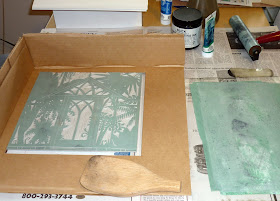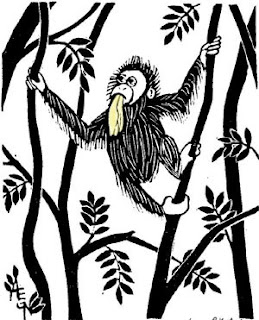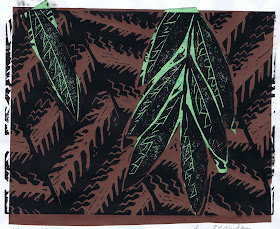The word suspicious caught my attention this week, and it occurred to me how strange it is that the same word goes in both directions, applying to both sides of a relationship. Think of it this way: if Arnold is watching Bert lurking and prowling about, both Arnold and Bert can be described as suspicious. Arnold suspects Bert, and Bert's actions elicit suspicion, but both are suspicious.
Wondering which meaning came first, "inclined to feel suspicion" or "deserving of or exciting suspicion," I looked it up… and discovered that both meanings date back to the end of the fourteenth century. ("Deserving suspicion" is attested a bit earlier, but with words this old there isn't enough written data to conclude how long a word might have been in common use before any of the examples survived to come down to us.) In other words, since the very earliest uses of this word in English we've had this funny ambiguity.
As we discussed this word at the dinner table that evening, I jokingly used suspicable for the "open to being suspected" meaning, and suspishful for "feeling suspicion." Later when I started looking things up I discovered that I'm far from the first to have come up with variations on the theme.
suspicable - c.1614 - open to being suspected
suspiciency - c. 1690 - suspicion
suspicionable - c. 1692 - open to being suspected
suspectable - c. 1748 - open to being suspected
suspectful - Edgar Allan Poe, a man who certainly knew his suspicion, proposed suspectful to replace suspicious for one of the two meanings. That sounded like a great idea to me… but which meaning to replace? I think it sounds like it should be the "feeling suspicion" meaning, but it turns out that suspectful had the same ambiguity, having also been used in both senses since its origins around 1600. Curses, foiled again!
To complicate matters further, a number of variants of suspicious have been in use through the years, including suspectious, suspectuous, and suspicionous, now all obsolete.
So it looks like we're stuck with this strangely ambiguous word, the sort of word that makes me think, "That's no way to run a language!" It was the only word I could think of that had this particular issue (though synonyms dubious and doubtful can also be used to describe the actions on both sides of the coin, if perhaps not the actors)… Then P came up, looked over my shoulder and said, "Oh, it's just like smell." Yep, when Arnold catches a whiff of Bert's cologne, both Arnold and Bert smell. Sometimes I wonder how we manage to communicate at all!
[Picture: Jealousy from Six Masks, rubber block print by AEGN, 1999.]





























